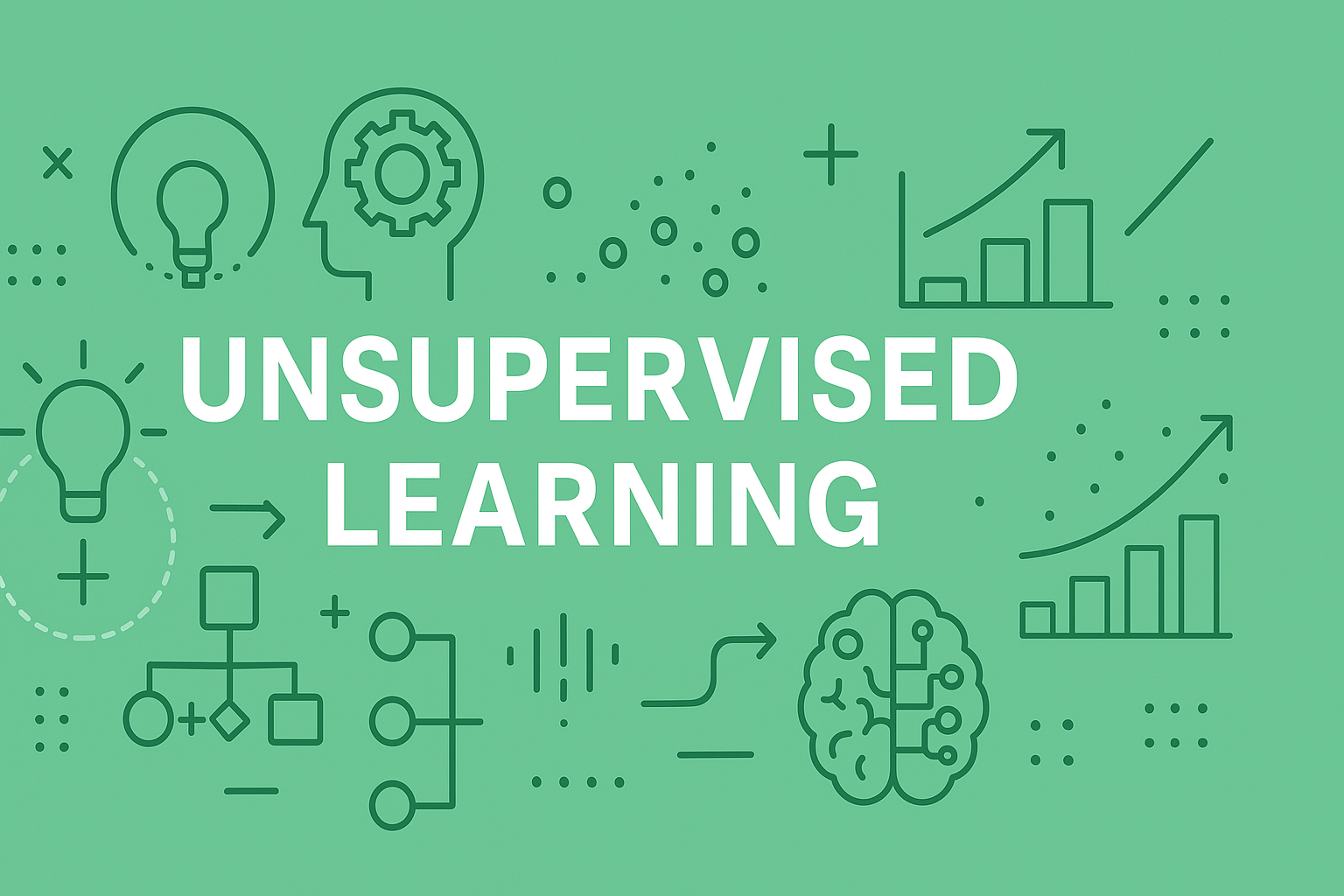🧠 What is Unsupervised Learning?
 Rohit Ahire
Rohit AhireTable of contents
- 🔍 Introduction
- 📘 Definition (ISLR Reference)
- 🔁 Real-Life Examples
- 🧰 Common Tasks in Unsupervised Learning
- ⚙️ How Clustering Works (Flowchart)
- 🌟 Clustering Example: Customer Segmentation
- 🧪 Dimensionality Reduction: Visualizing High-Dimensional Data
- 🧠 Unsupervised vs. Supervised Learning (Side-by-Side)
- ✅ Summary Table
- 🧠 What’s Next?

A Beginner’s Guide with Real-Life Analogies, Python Code, and Visuals
🔍 Introduction
If you've ever:
Seen YouTube group similar videos together 🎥
Watched Spotify cluster music genres you like 🎶
Used Google Photos to group your friends by face 😎
Then you've already experienced Unsupervised Learning in action.
But wait — what does it mean to learn without supervision?
Let’s break it all down — step by step — with code, charts, and examples to help you understand how machines learn hidden patterns in data.
📘 Definition (ISLR Reference)
From An Introduction to Statistical Learning (ISLR):
Unsupervised Learning is the problem of analyzing data without labeled responses.
In plain English:
You give the machine raw data, without labels, and it tries to find structure, patterns, or groupings all on its own.
🔁 Real-Life Examples
| Scenario | Input Data | What the Machine Learns |
| Customer Segmentation | Purchase history | Clusters of similar shoppers |
| Movie Grouping | Viewing behavior | Genre-based clusters |
| Anomaly Detection in Transactions | Credit card records | Unusual patterns (fraud) |
| Facial Clustering in Photos | Face features | People grouping (without knowing names) |
🧰 Common Tasks in Unsupervised Learning
There are two main types:
| Task Type | Description | Output Type |
| Clustering | Grouping similar data points together | Labels created by model (e.g., Cluster 0, 1, 2) |
| Dimensionality Reduction | Reducing number of features while keeping patterns | Compressed features (e.g., for visualization) |
⚙️ How Clustering Works (Flowchart)

🌟 Clustering Example: Customer Segmentation
Let’s generate synthetic customer data (e.g., annual income and spending score), and use K-Means Clustering to find hidden groups.
🧪 Problem:
You run a mall and want to group customers into marketing segments based on income and spending habits — but you have no labels.
🧪 Code:
numpy as np
import matplotlib.pyplot as plt
from sklearn.cluster import KMeans
from sklearn.datasets import make_blobs
# Create synthetic customer data
X, _ = make_blobs(n_samples=200, centers=4, cluster_std=1.0, random_state=42)
# Apply KMeans clustering
kmeans = KMeans(n_clusters=4, random_state=0)
clusters = kmeans.fit_predict(X)
# Visualize
plt.scatter(X[:, 0], X[:, 1], c=clusters, cmap='viridis', s=50)
plt.scatter(kmeans.cluster_centers_[:, 0], kmeans.cluster_centers_[:, 1],
c='red', s=200, alpha=0.75, marker='X', label="Centroids")
plt.title("K-Means Clustering of Customers")
plt.xlabel("Annual Income")
plt.ylabel("Spending Score")
plt.legend()
plt.grid(True)
plt.show()
📊 Output Interpretation

Each color = one discovered group
Red 'X' = center of each cluster
No labels were used — groups were discovered purely from data structure
🧪 Dimensionality Reduction: Visualizing High-Dimensional Data
Let’s say you have customer data with 10+ features. Hard to visualize, right?
That’s where PCA (Principal Component Analysis) comes in.
PCA projects high-dimensional data into 2D or 3D while preserving the most important variation.
✨ Example Code:
from sklearn.decomposition import PCA
from sklearn.datasets import load_iris
# Load Iris dataset (4 features)
iris = load_iris()
X = iris.data
y = iris.target # Just for coloring
# Reduce to 2D using PCA
pca = PCA(n_components=2)
X_pca = pca.fit_transform(X)
# Plot
plt.figure(figsize=(8, 6))
plt.scatter(X_pca[:, 0], X_pca[:, 1], c=y, cmap='viridis', s=50)
plt.title("PCA: Iris Data in 2D")
plt.xlabel("Principal Component 1")
plt.ylabel("Principal Component 2")
plt.grid(True)
plt.show()
📈 Output Interpretation:

You reduced from 4 features → 2 features while still seeing visible groupings between iris species — that’s the power of dimensionality reduction!
🧠 Unsupervised vs. Supervised Learning (Side-by-Side)
| Feature | Supervised Learning | Unsupervised Learning |
| Requires Labels | ✅ Yes | ❌ No |
| Goal | Predict a known output | Discover hidden structure |
| Example Task | Predict exam score | Group students into performance types |
| Output | Numeric or category | Clusters or reduced dimensions |
✅ Summary Table
| Term | Meaning |
| Unsupervised Learning | Finding patterns in unlabeled data |
| Clustering | Grouping similar items |
| Dimensionality Reduction | Shrinking data while keeping important features |
| PCA | Projects data into smaller space with max variance |
| K-Means | Finds group centers and assigns each point |
🧠 What’s Next?
Coming up:
📊 Hierarchical Clustering vs. K-Means — When to Use What?
🔍 Visual Intro to PCA, t-SNE, and UMAP for Beginners
🧪 Unsupervised Learning in Real Startups (Use Cases)
Subscribe to my newsletter
Read articles from Rohit Ahire directly inside your inbox. Subscribe to the newsletter, and don't miss out.
Written by
